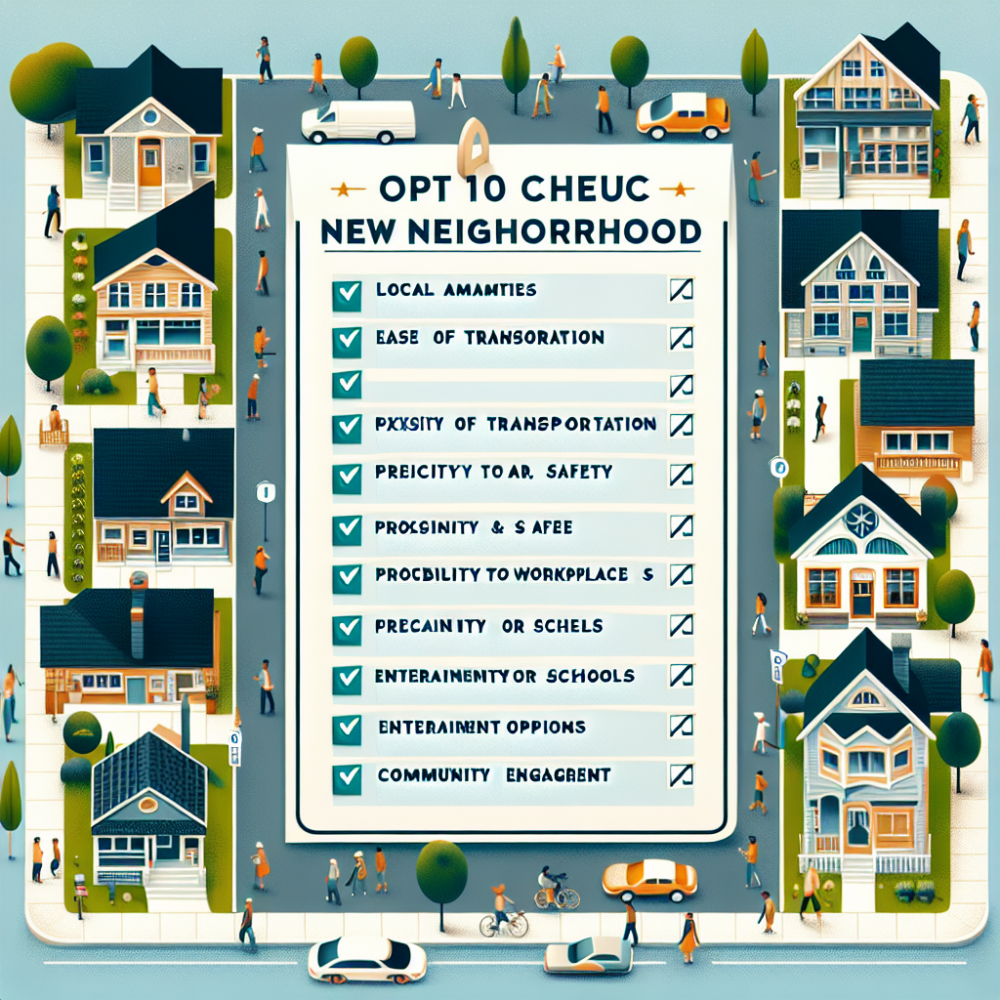Exploring Your Potential New Neighborhood: A Top 10 Checklist

Posted on: Monday, March 4th, 2024
Finding the right neighborhood requires thorough research and consideration, ensuring it meets your lifestyle, budget, and future plans. This guide provides a top 10 checklist for evaluating neighborhoods, blending practical considerations with personal preferences. Up-to-date and factually accurate insights will help you weigh the pros and cons of each area. From safety metrics to local amenities, this list is designed to give you a comprehensive overview of what to look for in your potential new community.
1. Safety and Crime Rates: Start by checking the latest crime statistics for the area. Local police stations, online databases, and community forums provide up-to-date information. Safety is paramount, affecting not only your well-being but also property values.
2. School District Quality: For families, the quality of local schools is crucial. Use online resources like the Department of Education's website or GreatSchools.org to review ratings and parents' feedback.
3. Commute Times: Evaluate the commute to work or other frequently visited places. Use mapping tools like Google Maps to get accurate estimates during various times of the day, considering public transportation options as well.
4. Local Amenities: Amenities like parks, restaurants, and grocery stores add value to daily life. Take a personal tour of the neighborhood to gauge what's available or consult online community guides.
5. Community and Social Life: A vibrant community can greatly enhance your living experience. Check for community centers, clubs, or groups that align with your interests. Social media and local bulletin boards can be great resources.
6. Property Values and Taxes: Understanding the local real estate market and tax rates is essential. Research current property values, recent sale prices, and property tax rates to assess affordability and investment potential.
7. Environmental Quality: Air and water quality can impact health and quality of life. Consult Environmental Protection Agency (EPA) resources and local reports for information.
8. Future Development Plans: Future developments can affect neighborhood dynamics. Look into municipal plans for construction, zoning changes, or large-scale projects that could influence the area's appeal and property values.
9. Noise and Pollution Levels: Noise from traffic, airports, or commercial activities can affect your living environment. Visiting at different times and days can give you a clear picture, combined with local environmental reports on pollution.
10. Neighborhood Culture and Demographics: Understanding the cultural vibe and demographic makeup can help ensure you'll fit in. Exploring local events, talking to residents, and visiting cafes and public spaces can offer insights into the community's character.
By meticulously going through each point on this checklist, you'll gain a thorough understanding of what each neighborhood offers, enabling you to make an informed decision about where to live. Remember, this research is crucial in finding a place where you'll be happy, safe, and engaged with your community.